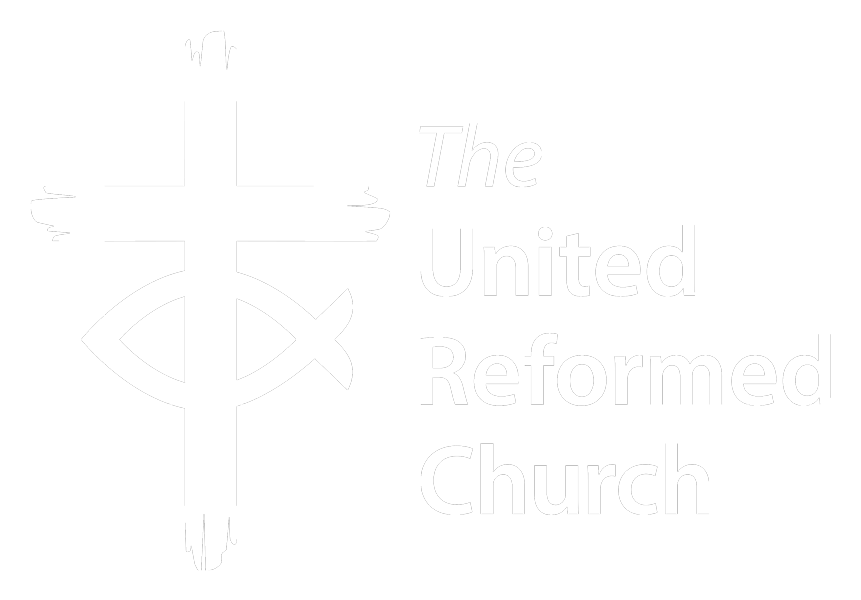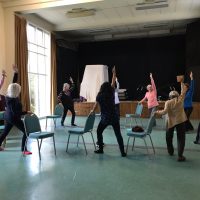Sermon given on Easter Sunday. St. Andrew’s Ealing, 21st April 2019 by Revd Sue McCoan
Luke 24:1-12
We left the women in their grief and loss, keeping the Sabbath in mourning. The sabbath ends at sunset, and they can’t do anything in the dark. But their spices are prepared; they know what they have to do; and early in the morning, just as dawn was beginning break – that is, at the very first opportunity – they go back to the tomb that they had noted, to anoint the body.
Only – it’s gone. The stone that sealed the entrance has been moved and the tomb is empty.
I once parked my car in a huge office car park, no row markers, so I parked next to a really distinctive bright yellow sports car, so it would be easy to find mine. Had the meeting, came out, and found the yellow sports car easily enough – and mine wasn’t there. And my first reaction was not, oh, it’s been stolen, or anything so rational. My first reaction was disbelief – but it was there! How can it not be?
(It turned out that there was another, identical, yellow sports car in the next row, and my car was next to that.)
But here are the women, with that sense of disbelief – how can that body not be there? – of shock, and the added horror that this is not just a car but a person, someone they loved. I wonder how long they stood there, perhaps thinking, how much worse can this get?
And then a message: remember what Jesus told you, that he would be handed over, he would be crucified and he would rise on the third day.
Right… he did say that… but then, where is he? What does this mean? Still they can’t really make sense of it all.
They’re not going to get any more answer here. There’s nothing more they can say or do. Their spices will keep for another time. They go back and tell the men what’s happened. Perhaps not surprisingly, the men find this very hard to believe.
Resurrection, at this stage, is nowhere near joyful. It is baffling and upsetting and causing mistrust. It takes a length of time, and the risen Jesus appearing in person, before the followers of Jesus, men and women, are able to start piecing things together and gradually accepting this new reality. Jesus is risen, and the world will never be the same again.
There is so much we can gain from reflecting on this Easter story. I’d like to suggest 3 things for today.
The first is that resurrection is not a quick fix. There is no ‘ta-da! It’s all over’ moment. The torture of Jesus was real, the death was real, the grief was real, and there needed to be the Saturday for all that to sink in, before people could even begin to think that this might not actually be the end.
Marion and I are trustees of the London Interfaith Centre, a Christian organisation jointly supported by the URC and the Church of England. Last year, we faced the reality of our situation: both the directors would retire within the next couple of years, and neither the URC or the CofE were willing to continue funding those posts. Recognising all that the centre had contributed to interfaith relations and understanding, the trustees took the reluctant decision that the centre had to close. It was a real loss, particularly for those people who, unlike me, had been deeply involved with the centre. The following week, a few of us went to see Philip Brooks, who is the URC secretary for interfaith relations, to talk about how best to divide up the assets of the interfaith centre. Philip had an insight, an inspiration, that suddenly opened up all sorts of possibilities that we hadn’t been able to see, which was wonderful. But I think we would not have been able to get to that point of seeing a new shape to the venture, if we had not first had the courage to decide to close it as it was.
We so want God to sort things out and make things right, and quickly. Resurrection is not an easy answer; sometimes it needs a step of faith, a letting go. Sometimes it is just the courage to keep going and to keep looking.
This brings us to the second thing about resurrection: that it brings hope into situations where no hope is possible. Jesus rising from the dead is a one-off event; we’re not looking for that to happen again. But we can look for hope; we can claim God’s hope, even in hopeless times.
There are enough situations in the world that seem to have no solution: Syria, Israel/Palestine, Venezuela, among many. It is easy to give in to despair. But it is precisely those times when we cannot see a way forward that we need to cling to the hope that resurrection brings. This week we heard news of the shooting of a young journalist, Lyra McKee, in Derry, Northern Ireland. Most of us are old enough to remember the Troubles, though we may have forgotten just how devastating that time was and how impossible peace seemed. Lyra was shot by a group called the New IRA, and there are fears that trouble is starting to rise again. On Good Friday, itself a symbolic day, hundreds of people gathered for a vigil to honour her. And then, to this Republican heartland, came Arlene Foster, the DUP leader, with a message of solidarity, standing beside people in their pain regardless of their political or religious affiliation. And the people, who would at one time have seen her as a sworn enemy, applauded.
It is resurrection hope that makes someone like Arlene Foster take this step. It is hope that makes us get up and try again; it is hope that calls us to spend time with someone who is dying, even when they are unable to respond; it is hope that makes us turn out on the streets in protest even though we are sure our protest will be ignored; hope that makes us vote for a party we think can never win; hope that makes us do our bit for the environment, even though we know that it will take massive state-level intervention to make the difference we really need.
When we speak of resurrection, we speak of the confidence that goodness and godliness will come out of the situation, however bleak it seems, and we act from that confidence.
So resurrection does not mean a quick fix, but it does mean there is always hope.
The third thing that struck me today is a little different from these two. It’s about the role of the women. They only did what women of their time were expected to do – looked after the men, kept a low profile, did the menial jobs like anointing dead bodies. But what if they hadn’t done it? What if the death had happened at a different time, on a different day, and the women had been able to do the spices straight away? What if they, like the men, had been too afraid and stayed away? What if they had been squeamish and thought, the body will be too damaged, we don’t want to look on it again?
If the women had not gone that morning, it might have been days before any of the followers of Jesus discovered the empty tomb. By then, anything could have happened – grave robbers, the authorities wanting to stop anyone creating a shrine, criminals wanting a ransom. By then, the disciples would have seen the risen Jesus, but without an empty tomb might never have pieced it all together. The women were the first witnesses to the empty tomb; it is because of them that the men then went to look.
The women might have said, we were just doing what we thought was the right thing. They got no thanks or credit at the time; they weren’t even believed. But their evidence is critical in the understanding of the whole story.
Plenty of people in churches think they don’t do much. They ‘just’ do the flowers, or they ‘just’ do the sound system, or the washing-up, or whatever. Resurrection shows us that even the smallest gesture plays a part in the story as a whole, a part we might not even see.
Resurrection is not a quick fix; it does mean there’s always hope. And each and every one of us is part of the ongoing story.
So yes, this is a day of excitement and wonder, of delight and celebration. It is a day to celebrate that the God of earth-changing power is also God of the small and the everyday. It is a day of resurrection hope for the whole of our lives. Thanks be to God.
Amen



